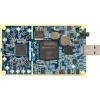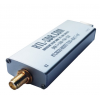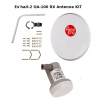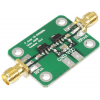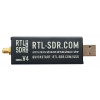Shopping Cart
0 item(s) - R0.00- 3D Printing and Plastic peripherals (8)
- 433Mhz and Lora (9)
-
Amateur Radio (651)
- - Antenna Analyzer (12)
- - APRS (12)
- - ATU (5)
- - CW (1)
- - Digital Modes (9)
- - DMR (4)
- - Echolink (10)
- - Enclosure (13)
- - Eshail-2 (QO-100) (67)
- - GPS (8)
- - iGate (1)
- - Microcontrollers (43)
- - Microphone (1)
- - Power Supply (7)
- - Programming Cable (6)
- - QRP (9)
- - Radio interface (21)
- - Receiver (9)
- - Repeater (4)
- - RF Amplifiers (20)
- - RF Kits (19)
- - RF modules (116)
- - Rotator (1)
- - SDR (75)
- - Spectrum Analyzer (4)
- - SWR (9)
- - Transceiver (59)
- - WSPR (5)
- Antennas and Acc (320)
- Audio and Video (28)
- Bargain Box (1)
- Battery (3)
- Bluetooth (11)
- Cables (37)
- Computer Peripherals (104)
- Connectors (90)
- Data acquisition (1)
- Display (2)
- Electromechanical (25)
- Enclosure (12)
- GPS (6)
- Hardware (3)
- Home Automation (128)
- Inverter (9)
- Liquid (7)
- Lora (8)
- Microcontrollers (119)
- Modbus (3)
- MQTT (14)
- Network Radio (3)
- Networking (8)
- Power (133)
- Power supply (49)
- Radio Interface (17)
- RF Modules (142)
- ROIP (2)
- Satellite (93)
- Security (13)
- Sensor (17)
- Solar (14)
- Test and Measurements (66)
- Tools and Equipment (8)
- VOIP (10)
- Weather (1)
LimeSDR Mini Transceiver 10 MHz - 3.5 GHz (Bandwith 30.72 MHz ) 12Bit A/D, Full duplex, USB3,LMS7002M chip (Max 10dBm)
Ex Tax: R4,970.00
Add to Compare
LimeSDR Mini
The LimeSDR Mini development board is a hardware platform for developing and prototyping high-performance and logic-intensive digital and RF designs that use Altera’s MAX 10 FPGA and Lime Microsystems’ LMS7002M RF transceiver.


LimeSDR vs LimeSDR Mini
The LimeSDR and LimeSDR Mini are members of the same family of software-defined radios. One does not replace the other. Rather, they are complementary.
Simply put, the LimeSDR Mini is a smaller, less expensive version of the original LimeSDR. However, it still packs a punch - at its core, the LimeSDR Mini uses the same LMS7002M radio transceiver as its big sibling. The Mini has two channels instead of four, and, by popular demand, SMA connectors instead of micro U.FL connectors. Check out the comparison table below for more details.
We’ve already shipped thousands of LimeSDR boards and they are now available for purchase from stock. The LimeSDR Mini is built on the LimeSDR supply chain, dev tools, and community in a way that makes software-defined radio more accessible than ever.
Features & Specifications
- RF transceiver: Lime Microsystems LMS7002M
- FPGA: Altera MAX 10 (10M16SAU169C8G)
- 169-pin FBGA package
- 16 K Les
- 549 KB M9K memory
- 2,368 KB user flash memory
- 4 x fractional phase locked loops (PLLs)
- 45 x 18x18-bit multipliers
- 130 x general purpose input/output (GPIO)
- Single supply voltage
- Flash feature
- FPGA configuration via JTAG
- EEPROM memory: 2 x 128 KB for RF transciever MCU firmware and data
- Flash memory: 1 x 4 MB flash memory for data
- General user inputs/outputs:
- 2 x dual color (red + green) LED
- 8 x FPGA GPIO pinheader (3.3 V)
- Connectivity:
- USB 3.0 Type-A (FTDI FT601 controller)
- 2 x coaxial RF (SMA) connectors (each can be switched between high and low frequency bands)
- U.FL connector for external clock source
- FPGA GPIO headers
- FPGA JTAG connector
- Clock system:
- 30.72 MHz onboard VCTCXO
- Possibility to tune VCTCXO with onboard DAC
- External clock input via U.FL connector
- Board dimensions: 69 mm x 31.4 mm
- Board weight: 20 grams
Block Diagram

Free & Open Source
As with the original LimeSDR, the LimeSDR Mini is a free and open source project made in collaboration with the Myriad-RF project. We will be releasing code, firmware, schematics, layout, and associated project files shortly.
LimeSuite
The LimeSDR Mini uses the same host-side software, called LimeSuite, as the full-size LimeSDR. LimeSuite is entirely open source and supports a variety of software-defined radios. You can learn more about LimeSuite at its GitHub repository and Myriad-RF project page.
Snappy Ubuntu Core
A big part of the LimeSDR ecosystem is the Snappy Ubuntu Core app store being developed jointly with Canonical and the LimeSDR community. Because the LimeSDR and LimeSDR Mini use the same drivers and APIs, the snaps developed for one should work equally well for the other so long as they are within the operating specification.
Development Status
We currently have working prototypes and don’t expect any major changes before going to production. We’ve had a great working relationship with our manufacturing partner for a number of years already – they were also the manufacturer for LimeSDR – and we know they can deliver high-quality, well-tested assembled boards. The working prototype shown in the images below has MMCX connectors - the final version will have two SMA connectors and a U.FL connector for external clock input.
Write a review
Your Name:Your Review: Note: HTML is not translated!
Rating: Bad Good
Enter the code in the box below:
Giga Technology © 2025









